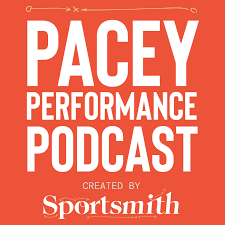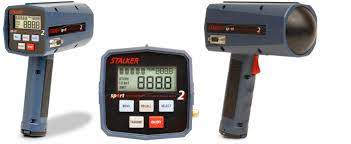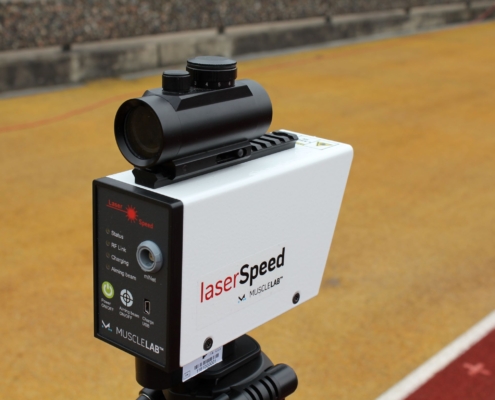Pacey Performance Podcast REVIEW- Episode 359 Damien Harper
This blog is a review of the Pacey Performance Podcast Episode 359 – Damien Harper
Damien Harper
Lecturer at the Institute of Coaching & Performance (UCLAN)
Background:
Damien Harper
Damian is currently working in the Institute of Coaching and Performance at UCLAN, supervising students on professional masters and doctorates in elite performance. He’s also a member of UCLAN’s newly developed football performance hub, developing the human braking research group following his PhD.
Prior to his time with UCLAN, Damian lectured in exercise physiology at York St John University, coached at the Bobby Charlton Soccer School, and earned his master’s degree while working with sports clubs in his local area. One of which was St. Albans Rugby Club, where he developed the 10/05 repeated jump test.
Discussion topics:
Why is deceleration so important?
In terms of what we are talking about when we are referring to deceleration it’s horizontal deceleration, so the opposite of horizontal acceleration. What we are looking at is how quickly the athlete can reduce their speed with respect to time. So we want to improve the ability of the athlete to reduce their speed as quickly as possible. This is important from a movement outcome perspective and deceleration capability, and in addition to the mechanical aspect of deceleration we also want to look at the intricacies of the movement skill. Deceleration is a highly complex interaction of the limbs to ensure that the athlete can apply those braking forces effectively and orientate those forces effectively.
So in essence there are two key components when we look at deceleration; one how well they can control the braking forces and two is how well they can attenuate and distribute those forces throughout the lower limbs. Therefore braking force control and braking force attenuation are the two key components that I look at.
Bill Knowles first came up with the mantra ”Don’t speed up what you can’t slow down.”
If an athlete hasn’t got that deceleration ability alongside that acceleration and top speed capability, then they are going to take a longer time and longer distance to slow down.
It is perhaps more accurate to say an athlete will not speed up what they can’t slow down, and there is probably a self regulatory mechanism there which is the athlete will reduce their speed knowing that they have got a deceleration at the end of it. So they won’t speed up what they can’t slow down to try and protect them from potential tissue damage which could occur in deceleration, which consumes some of the highest mechanical loads on the lower limbs.
Athletes who can decelerate more rapidly can enhance their COD ability so in essence they can hold off their brakes for longer because they can reduce their speed over shorter distances and times, so they can access a greater percentage of their top speed potential during the COD task. That deceleration capacity becomes absolutely critical in terms of enhancing overall speed potential.
In addition to performance enhancement with COD, an individual who has got better deceleration ability can actually reduce the amount of mechanical load that is going to be exposed on the plant step where we see all these ACL injuries and potential lower limb injuries.
You wouldn’t get in a super car that has amazing top speed capabilities if you knew that the brakes were warn and not working very well, you just wouldn’t put the accelerator down because in any set distance you know it is going to take longer to brake.
The problem with the super car analogy is that until recently we haven’t really been able to get a good indication of an athlete’s deceleration capability, so we don’t know how that interacts with the acceleration and top speed; we don’t know how good the brakes are as such.
What are the options for testing deceleration capability?
One of the problems we have had with advancing deceleration has been linked to the difficulty we have in measuring it, as it is much harder to measure than your acceleration and top speed capability but the good news is I can now see more options that can be applied on the field, which is great. In terms of measuring deceleration there are two options; one to measure it during a change of direction task (such as a 5-0-5 test) which requires the athlete to bring their momentum to zero before changing direction so there is a really big deceleration demand within a 5-0-5 test. Generally angles less than 60 degrees are no good because they are focused on maintaining speed.
The other option is Horizontal acceleration to deceleration in a linear path; you could get the athlete to stop at a pre-set distance- where the athlete has to sprint and then come to a stop at that [20m] line. The other option is to commence deceleration at a pre-set distance. So at the [20m] mark they have to put on the brakes and try to stop as quickly as possible; we refer to that as the Acceleration-Deceleration-Ability (ADA) test.
So then the question is how do you measure deceleration during those tasks? It took me about 12 months to arrive at the conclusion that we need to have instantaneous velocity throughout the task using radar, or laser or high speed video or electro-motor devices like the 1080 sprint. It surprises me that even today there are only a couple of studies that have attempted to capture instantaneous velocity during a change of direction task. I refer to these as ‘direct methods’ of measuring deceleration.
There are also ‘indirect methods‘ of capturing deceleration such as the ‘change of direction deficit’ and the ‘deceleration deficit, but they are only an estimation, we don’t know at the minute if they actually give you an indication of an athlete’s deceleration capacity which in essence is metres per second squared (m/s 2).
We selected 20m at the time because we wanted to select a distance which allowed the athlete to get near to their maximum velocity, so therefore we challenged their deceleration capacity. The greater the speed they approach the deceleration the greater the demands on their deceleration demands are going to be. We wanted to ensure we capture their maximum deceleration ability. You could adapt that distance to the demands of the sport.
You can look at AVERAGE deceleration (taking all the instantaneous values over the entire deceleration phase and getting an average of their deceleration values) and Peak deceleration (which is a single value), but I’ve tended to think that this isn’t the best measure of an athlete’s deceleration ability as this doesn’t really account for the entire deceleration phase.
There is a possibility that athletes with high peak deceleration may be obtaining them because they are not able to spread the deceleration across the entire deceleration phase. Therefore there are high peak values occuring particularly near the back end of the deceleration.
What tech do you need to be able to capture those measure?
”I used a radar gun (Stalker) but you can also use laser devices, which have a higher sampling frequency such as ergo test laser speed device, (which I believe has the ADA test built into the software).
But you could also obtain instantaneous velocity with high speed video such as dartfish or some of the newer devices such as 1080 sprint.
If you don’t have a budget for high tech equipment there is an option to look at some indirect indication of an athlete’s deceleration ability by looking at some of the underpinning qualities connected to the physical qualities that are needed to decelerate. This could include drop jumps and counter movement jumps, and use some of the specific metrics within them.
With the drop jump reactive strength index (RSI) was proposed as a key physical quality for deceleration, originally proposed anecdotally by Marc Kovacs. Recently we found quite large associations with RSI from either 20cm or 40cm and deceleration ability. When we broke the deceleration into early (50% Vmax) and late deceleration phase (50% Vmax to zero) we found that drop jump RSI had a greater association with early deceleration phase- shorter ground contacts and really high impact peaks when there is perhaps more of a heel strike and there is a transition from that top speed to the first few steps of deceleration phase.
Athlete’s who could put the brakes on quicker could achieve greater deceleration ability across the whole deceleration phase. So greater drop jump RSI could be important for tolerating the higher forces during the early deceleration phase, and ability to reduce the mechanical loads in the final foot contact and have better change of direction. This could also be linked to ability to pre-activate prior to ground contact, and therefore pre-tension prior to hitting the ground.
Can you speak to us about strategies to actually improve deceleration?
I have already mentioned about reactive strength as possibly one key quality. The other qualities that Mark mentioned at the time was:
- Eccentric strength
- Dynamic balance
- Power – which includes rate of force development (RFD)
Eccentric strength is quite a wide area. By identifying some of these specific eccentric qualities we can help then to target our training strategies. Of the eccentric qualities we looked at during a counter movement jump, it was the ones linked to eccentric deceleration phase – eccentric peak force and eccentric RFD which had the biggest difference between those who had low and high deceleration abilities. Now that gives us a little bit better insight and these qualities have been linked to an athlete’s stretch load tolerance or limb stiffness capabilities. They are also under reasonably fast joint angular velocities- the downward phase round about 200 degrees/second- so they are having to produce those forces pretty quick- with highest rates at the ankle and knee as much as 500 degrees/second.
In terms of eccentric maximum strength we have seen most evidence to target the quadriceps which is perhaps not surprising as the quadriceps are absolutely critical in terms of resisting that knee joint flexion/controlling that yielding during the braking step and also critical for attenuating the forces when we brake. The knee and the ankle will attenuate (dampen) about 70% of the force during deceleration so before it gets to the hip the majority of force has already been dampened and reduced. You could also look at muscles such as the rectus femoris which because of the trunk position, places quite a big demand on that muscle, so you do see exercises like a reverse Nordic being used with an upright trunk.
A lot of my ideas about means to develop solutions, a lot of these ideas have come off the back of the work I did with the Football Association looking at development of a braking strength framework to prepare international footballers for competition demands.
- Braking ELEMENTARY exercises – have highest level of tissue/neural overload (single joint, unilateral)
- Braking DEVELOPMENTAL exercises
- Braking PERFORMANCE exercises – have highest level of coordination overload (small sided games or utilizing unanticipated decelerations to target really high forces that are highly specific to what the athlete is going to face in competition).
To increase the players damage resistance to high deceleration loads.
An example of a method such as ‘rapid eccentrics’ would probably fit in the braking developmental exercise category. We are increasing their eccentric peak force, eccentric RFD and also ability to switch off quickly to unload the centre of mass quickly and could include exercises such as squat drop, or snatch drop and then arrest that movement at the bottom. You can look at a fast eccentric squats which is an eccentric only exercise, where we emphasise the speed of the downwards phase (40-70% 1RM).
Drop jump type activities- and activities which may accentuate that component. You can also do activities such as dropping from a relatively low height with an additional load, and then the concentric phase has a lower level of load than the eccentric phase. It can be done with dumbbells, hex bar, elastic resistance (loaded on the downwards and then explode on the upwards phase). He bar is preferable to dumbbells as the athlete is not worrying about landing on the dumbbells.
How can you manipulate SSG in order to target deceleration?
I’m finding the 4 vs 4 and 5 vs 5 (smaller SSG) really stresses the frequency of decelerations, high frequency of velocity changes which may help develop the enduring nature of decelerations. It may be larger SSG that are needed to develop the maximal deceleration capabilities where there are opportunities to attain higher movement velocities, which has important implications for managing the microcycles, particularly in the competition phase.
A constraint is whether you utilize goals or not, and with the goals in place research suggests there is more linear running and transitions whereas the possession only SSG doesn’t achieve that as much. You can also use different numbers such as a 4 vs 5 to offset the numbers could be another option.
Where is the research going in the future?
- Resisted/assisted concepts with 1080 motion device to develop deceleration and COD
- Advancing the assessment of deceleration including limb to limb demands across a period of time
- Training interventions to develop deceleration capabilities – very little research been done here
Top 5 Take Away Points:
- Deceleration definition- how quickly the athlete can reduce their speed with respect to time.
- Braking force control and braking force attenuation are the two key components of deceleration.
- Deceleration capacity becomes absolutely critical in terms of enhancing overall speed potential
- To measure deceleration we need instantaneous velocity throughout the task
- In order to improve deceleration capability there are a number of components that can be enhanced (reactive strength, eccentric strength, dynamic balance and power).
Want more info on the stuff we have spoken about? Be sure to visit:
Twitter:
@brakingperform
You may also like from PPP:
Episode 372 Jeremy Sheppard & Dana Agar Newman
Episode 217, 51 Derek Evely
Episode 207, 3 Mike Young
Episode 192 Sprint Masterclass
Episode 87 Dan Pfaff
Episode 55 Jonas Dodoo
Episode 15 Carl Valle
Hope you have found this article useful.
Remember:
- If you’re not subscribed yet, click here to get free email updates, so we can stay in touch.
- Share this post using the buttons on the top and bottom of the post. As one of this blog’s first readers, I’m not just hoping you’ll tell your friends about it. I’m counting on it.
- Leave a comment, telling me where you’re struggling and how I can help
Since you’re here…
…we have a small favor to ask. APA aim to bring you compelling content from the world of sports science and coaching. We are devoted to making athletes fitter, faster and stronger so they can excel in sport. Please take a moment to share the articles on social media, engage the authors with questions and comments below, and link to articles when appropriate if you have a blog or participate on forums of related topics. — APA TEAM







